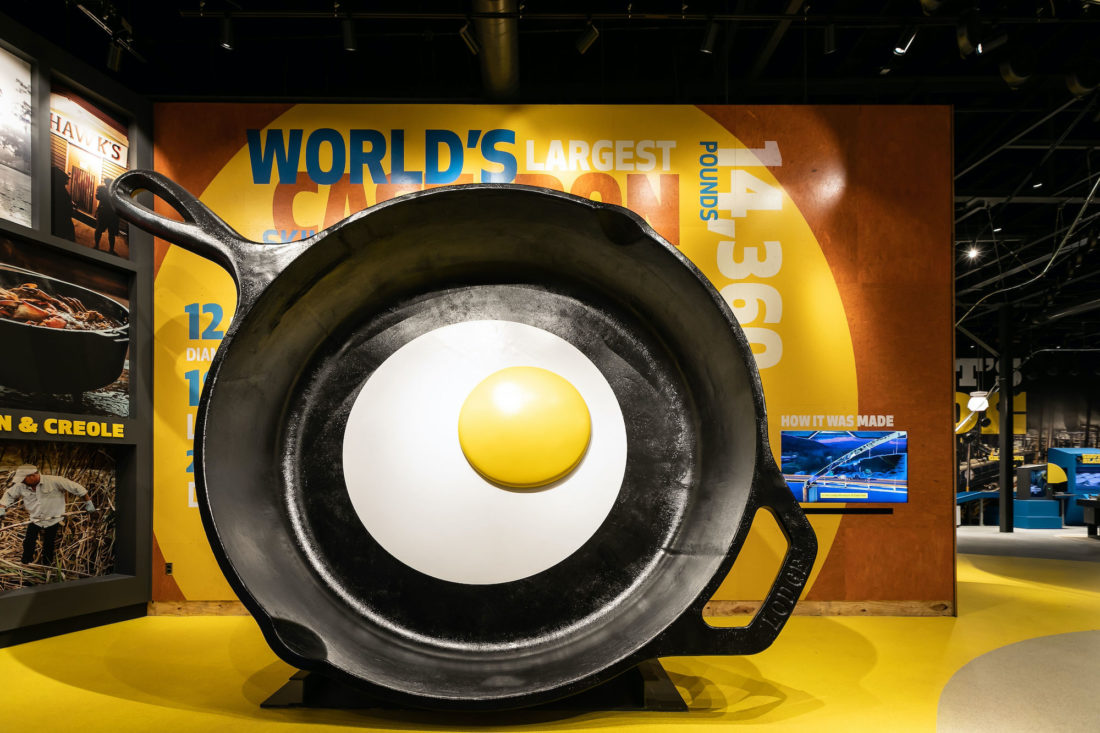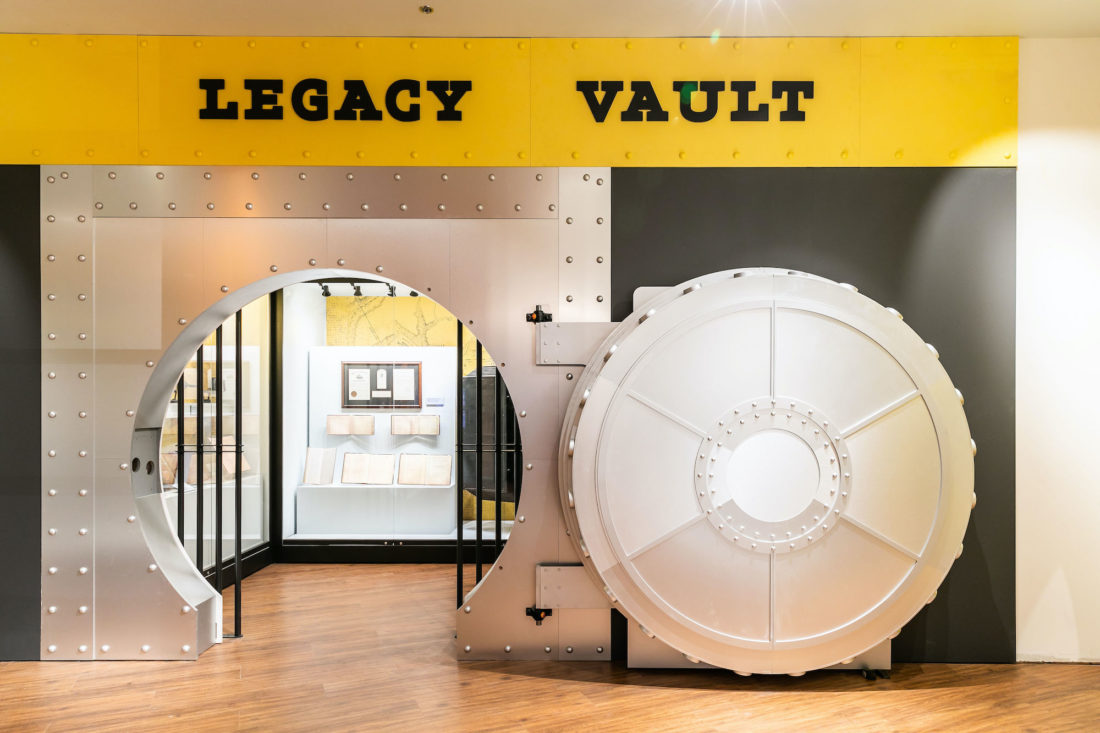The small town of South Pittsburg, Tennessee, about a half hour west of Chattanooga, is best known as the home of Lodge Cast Iron, the beloved manufacturer of heirloom cast-iron cookware. Since 1896, Lodge has operated foundries in South Pittsburg, employing modern machinery and ancient sand-molding techniques to craft cast-iron skillets and cooking accessories that have been handed down from generation to generation of home cooks. The entire company has also been passed on through five generations of Lodge family ownership.

Cast-iron appreciators converge on South Pittsburg each spring for the annual National Cornbread Festival/Lodge Cast Iron Cook-off and for the opportunity to shop in Lodge’s large retail store. The festival is the only day the Lodge foundry is open for public tours.
Still, Lodge has long yearned to share the details of its manufacturing process and heritage with its customers, whom they refer to as “fans,” and in early October opened the Lodge Museum of Cast Iron. Open daily, the museum is part of an expansion of the retail building that includes two new kitchens for recipe development and cooking demonstrations, plus an exciting new dining option for the town—the latest outpost of chef John Currence’s Oxford, Mississippi–based Big Bad Breakfast empire.

Inside the museum, visitors are greeted with a literal wall of cast iron showcasing Lodge’s product line, from skillets to woks and outdoor cooking gear. Other displays describe the manufacturing process, which culminates in seasoning, the crucial step Lodge added in 2002 to allay customer fears about maintaining a non-stick surface. Since then, the company has seen twenty consecutive years of explosive growth.
One dramatic display allows visitors to control a large magnet that picks up, transfers, and loudly drops chunks of steel into a hopper, like an oversized version of the claw game at a bar. Collectors will love the “Legacy Vault,” a room filled with ancient cast-iron pieces that Lodge also uses to help fans identify their own flea-market finds. And a wall labeled “Myth Rusters” is dedicated to addressing some consumers’ preconceived notions. (Yes, you can use soap on cast iron. The idea that you shouldn’t goes back to when soap contained lye that would strip the seasoning from a pan.)

The rear section of the museum celebrates cast iron as a part of Southern food heritage, featuring profiles and recipes gathered through Lodge’s partnership with the Southern Foodways Alliance. Visitors can choose recipes to compile into a digital cookbook, which will be waiting in their email inbox when they get home.
No trip to the Lodge Museum of Cast Iron is complete without stopping for a selfie with the world’s largest cast-iron skillet, a prodigious pan measuring eighteen feet across. Just don’t ask to see the chicken that laid the fried egg that’s displayed on the surface of the skillet. They’ve already heard that one.
If you were driving down I59 yesterday, you might have seen something special headed north! The World’s Largest Cast Iron Skillet made its way to our campus to find its home in the Lodge Cast Iron Museum that is currently under construction. Learn more: https://t.co/ccaO9ysccD pic.twitter.com/eYO1VQH06g
— Lodge Cast Iron (@LodgeCastIron) January 13, 2022








